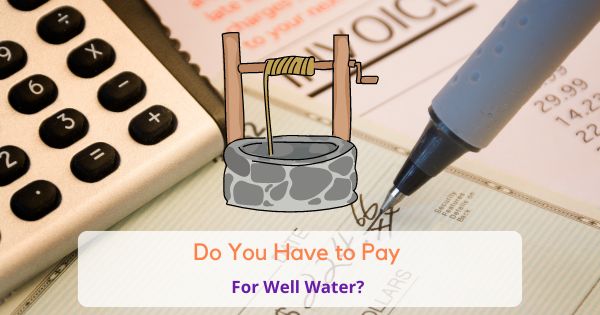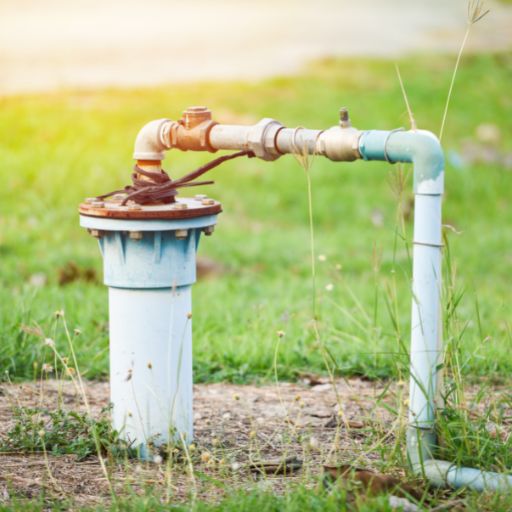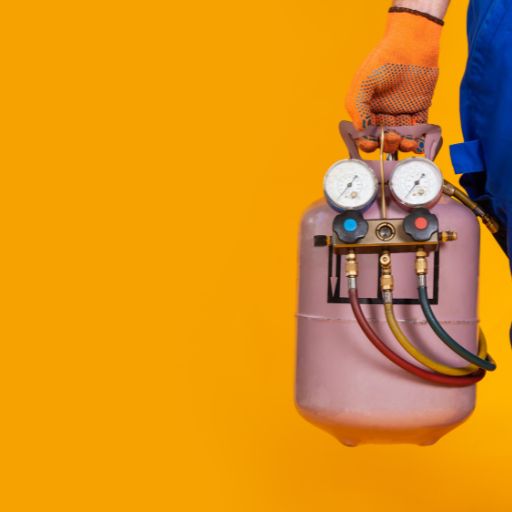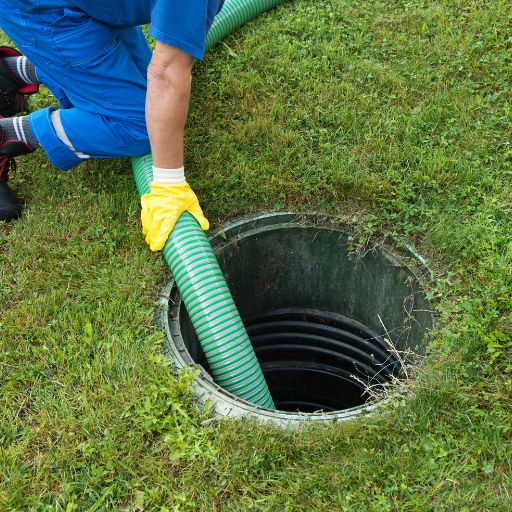
As the price of goods continues to rise across the board, more people than ever are looking for a way to cut down on expenses.
One compelling way to do this is by switching your home from city water to well water. If you live in the right area, well water can cut your monthly drinking water bill down to nothing.
So let’s get down to it: do you need to pay for well water?
You don’t need to pay anyone to use well water. It comes from your local aquifer, a layer of underground water. However, installing a well requires some upfront investment and regular maintenance costs.
Initial costs of setting up a well
| Drilling | $15 – $30 /ft |
| Pumps | $500 – 2000 |
| Casing | $10 – 120/ ft depending on material |
| Filtration or softening system | $1000+ |
Ongoing maintenance costs of running a well
| Testing | $120 – 200/ yearly |
| Maintenance of septic system | $150 – 500/yearly |
How does well water save you money?
Did you know that the cost of being supplied by municipal water systems has increased by over 30% since 2012 [1]?
Monthly city water bills in the USA average about $70. That’s $840 per year. These prices will likely continue to increase faster than inflation, making your monthly water bills an increasingly large chunk of your monthly expenses.
The first way well water saves you money is by eliminating these costs. A household that uses well water won’t be subjected to the rising costs of city water.
Increasing the value of your home
But there’s more! Wells make a great long-term investment for homeowners because they raise the value of your house. That’s because a well-functioning well promises a long-term water supply to your home.
With more people than ever interested in “off-grid” living, wells can make for a big bonus to lots of potential homebuyers.
Other benefits of having a well
Your and your family’s health is priceless. But healthcare is certainly not!
Switching to a healthier water source might save you in the long run.
Properly treated well water is safe to drink and contains beneficial minerals that contribute to proper body functioning. You can even let your dog drink well water, or use it to fill a fish tank.
As water settles into the ground, it seeps through layers of ground rock before reaching an aquifer. An aquifer is the underground pocket of water that wells draw from.
Depending on where you live, your well water will contain trace elements of the rocks that the water seeps through.
Calcium is an excellent example of a healthy mineral you can get from your well water. Calcium contributes to healthy bones and teeth. It also aids in blood clotting, hormone regulation, and proper muscle contraction. Limestone and many other rocks contain high levels of calcium [2].
Using well water means taking your water health into your own hands. You’ll need to test your water for other contaminants using a simple water test strip.
Knowing this, you can also understand what helpful minerals your well water contains.
How much does a well cost?
Of course, a well doesn’t just build itself. Nor do they pump themselves. How much can you expect to pay to make and maintain a well?
Digging & drilling a well
If your home doesn’t already have a well installed, you need to dig and drill one first.
Drilling and digging well costs about $30 per foot of depth. However, this price varies greatly depending on the type of ground rock.
Another significant factor in how much your well will cost is the aquifer location. Some aquifers are just 50 feet from the ground, while others can lie hundreds of feet below the surface.
Talk to some well-drilling companies to get an evaluation of your land. You can hire a contractor to survey your drill site. From there, you can start estimating how much it will cost to drill a well at your home – check out our post on how deep a well should be to help you with your estimate.
Equipment for operating a well
Before you can enjoy the benefits of well water, you need to get your well up and running. Admittedly this is one downside of well water when compared to city water.
Pump
A pump is one of the most important pieces of equipment in a well system. Well pumps can cost from $900 up to $2000.
Well depth is the biggest factor in determining how much your well pump will cost. A shallow well requires less expensive pumps than a deep one.
Pumps come in three main varieties: jet pumps, submersible pumps, and convertible pumps. Submersible pumps usually have the highest price tag, but they pump water from up to 300 feet underground.

Pressure Tank
A pressure tank is a container that holds pressurized water and creates water pressure inside your home. A well system needs a pressure tank to store water so the pump doesn’t have to work as hard to bring water up from the well. This saves the pump from working constantly and increases its life span.

The pressure tank also ensures that water is always available when you turn on your faucet, even if the pump isn’t running. Without one, you might have to wait for the pump to kick on every time you turn on the faucet, which can be frustrating.
Pressure tanks cost anywhere from $200 to $600.
Casing type
Different wells use different types of piping to carry the water to the surface. The type of casing you need depends on the depth of the well and the soil conditions below ground.
Stainless steel pipe casing is the most robust and durable type of well casing. Its average price of about $120 per foot also makes it the most expensive.
You can buy galvanized Steel casings much more affordably at about $40 per foot. If your area isn’t known for seismic activity, this can be a reliable and cheaper alternative to stainless steel.
Finally, you can use PVC pipe casing if you really want to save money. It usually costs less than $10 per foot. But make sure to check that your well depth and soil conditions are appropriate before deciding to use this type.
Filtration systems
When we drink from a municipal water system, we trust that the city removes contaminants before sending it to our house. But well water requires that you remove all of these impurities yourself.
For that, you need a good filtration system. This includes several different components that filter out different things from your well water.
The first stage in filtering well water is a sediment filter. These devices remove large particles such as clay and small rocks. They cost from $50 up to several hundred dollars.
Next comes the whole house water filter system. These are a series of tanks and filters that remove natural and artificial contaminants from your water supply. They usually cost more than $1000. Well water often has high levels of heavy metals like iron – if this sounds like you, check out our piece on the best filters for well water with iron.
A UV water purifier destroys microorganisms that might live in your water. They cost about $1000.
If your local water supply contains high amounts of calcium and magnesium, you probably have “hard water.” Hard water can affect your skin and hair and can cause scale to build up on appliances. For low hardness levels, consider an electronic water descaler (we just published a list of the best ones here). Often homes with well water are in hard water areas, in which case a water softener for well water is more suitable – click here to see our recent round-up of our favorite softeners for well water.
Septic System (optional)
Houses with wells may be connected to the city sewer system, or alternatively, use a private onsite septic system to deal with waste.

Depending on the specifics of your situation, maintaining a well and septic system can cost anywhere from $150 to $500 per year. This is because you’ll need to have the septic system pumped regularly – how often will depend on your household’s usage.
These costs might be higher if you have to replace failing septic tanks.
Testing and maintenance
It’s important to have your water regularly tested. The CDC recommends yearly testing [3]. And you should test even more frequently if you suspect your water is contaminated for any reason.
A professional well water test can cost around $120 – 200.
Wishing you well
The prices above may leave you reconsidering your well! But remember that most people also recommend filtering municipal water supplies for drinking water. So most of this equipment is needed for any home water system, not just those using well water.
Switching from city water to well water can save you almost $1000 per year on your monthly water bill. With water costs increasing yearly, you might save even more in the future. Natural well water can be a great way to stay healthy and hydrated.
Certain properties can’t sustain a well because of local rock conditions, population density, and aquifer depth.
We hope you’ve learned enough to start considering whether a well water system is right for you!
